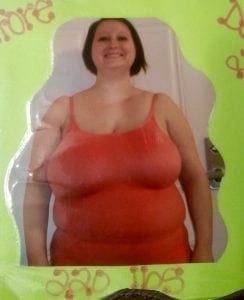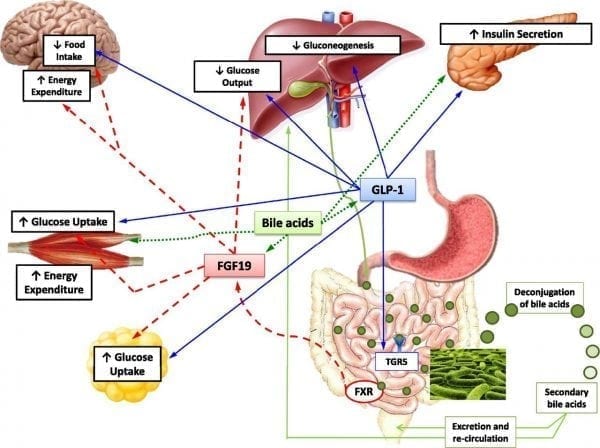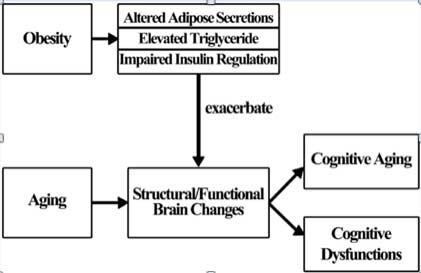Category: Weight Loss Surgery
Shared Success Story- Heidi
June 02, 2016 7:59 am
My name is Heidi and this is my weight loss journey. I had been struggling with my weight for years and was actively researching different surgical procedures available. I was also trying everything to lose the weight on my own. My wake up call to take action was one night when my husband said, “I’m worried about you and want you around for a long time.” I knew I had to do something. If someone loved me that much I needed to love myself enough to change.
So the very next day I made an appointment with my Primary Care Physician who recommended Dr. Ara Keshishian. That afternoon I called Dr. Keshishian’ office, scheduled a consultation and began what was about to be one of the greatest journeys of my life. I was approved within a month and ready to go.
In 2012, I had my Duodenal Switch with the great Dr. Keshishian. I was hopeful post op and determined to succeed. I knew with my husband’s and family’s love and support I could do it. I wanted to lose the weight for me, my husband and our future children so they had the healthy, happy mom they deserved. My Surgery weight was 220 ( Started at 230) I reached my goal at 10 months post op at 125lbs. Since having my DS I have had 1 (almost 2) amazing son’s. Duodenal Switch made this possible. I have my older son and I am currently 8 months pregnant with my 2nd son. Duodenal Switch did not just allow me to lose the weight that kept me from living life but it allowed me to get healthy and live life to the fullest. I am grateful everyday for my DS, my amazing husband, my boys, and Dr. Keshishian.
I am simply blessed. Would I do it again? In a heart beat.
Starting weight- 230
Surgery weight- 220
Goal Weight- 125
Current-130
Weight loss Surgery for Treatment of Diabetes
May 25, 2016 7:21 am
New guidelines and recommendation are coming out of the second Diabetes Surgery Summit in the Fall of 2015. One major change is Metabolic or Weight Loss Surgery for the treatment of Diabetes. With all the advances made in newer classes of medication for treatment of diabetes, the majority of patients who are being treated fail to get to achieve the desired results of lowered blood glucose level. This is in contrast where weight loss surgical procedures such as Duodenal Switch can results in >95% cure rate of type II diabetes.
The American Diabetes Association has made the recommendation for weight loss surgical procedures be considered as a treatment option for type II diabetes.
Summarizing their criteria “According to the new Guidelines, metabolic surgery should be recommended to treat type 2 diabetes in patients with Class III obesity (BMI greater than or equal to 40 kg/m2), as well as in those with Class II obesity (BMI between 35 and 39.9 kg/m2) when hyperglycemia is inadequately controlled by lifestyle and medical therapy. It should also be considered for patients with type 2 diabetes who have a BMI between 30 and 34.9 kg/m2 if hyperglycemia is inadequately controlled, the authors agreed. The Consensus S
tatement also recognizes that BMI thresholds in Asian patients, who develop type 2 diabetes at lower BMI than other populations, should be lowered 2.5 kg/m2 for each of these categories. ”
This is a remarkable change in thought and policy on diabetic treatment and long term strategies that can only improve patient outcomes. Stabilization and blood glucose hemostasis can only improve patient health, health care utilization and health care costs.
Inadequate Weight loss and Weight Regain
May 24, 2016 7:56 am
There were numerous causes for the inadequate weight loss and or weight regain after weight loss surgery.
These factors may include:
1-Type of the surgery: Duodenal Switch, RNY, Adjustable Gastric Banding, Intragastric Balloon, etc.
2-Patients metabolic state (age, activity level, hormones state etc)
3-Co-morbidities
4-Patient compliance
5-Other
Each and every one of these may be an independent factor or may be a contributing cause.
In our experience, patients non-compliance is not as common as others believe. Frequently, we see patients in our office where they have been told that the poor outcome of the surgery is “their fault”
We see this with RNY, and Band patients as well as some of the duodenal switch patients who are seeking advice for weight regain or inadequate weight loss.
I would like to talk about the issues of inadequate weight loss or regain post Duodenal Switch specifically. Duodenal switch operation as described by Dr. Hess, outlined the division of the small bowel lengths to be proportional to each and every patients own total bowel lengths. This meant that two patients with the same BMI and weight will end up with two different lengths for common and alimentary limbs if there total length of the bowel is different. Unfortunately, too often patients are given a “standard” or “set” ( not clear what that word means, since there is no established standard in the literature) length for common channels and alimentary channels regardless of the total small bowel length. In some patients, those lengths may result in acceptable weight loss. However, quite frequently a patient with a preselected length for the common and alimentary limbs will end up either loosing too much weight and have nutritional problems or not loose adequate weight. As with all practices, we have over the years had patients who have had nutritional deficiencies and excessive weight loss or have had inadequate weight loss. Looking at the raw numbers however, we have had more patient from other practices that have come to us for revisions and corrections of lengths of the bowel lengths from other practices that our own patients have required.
Another level of the confusion is the improper interchanging of the “SIPS and SADI” procedures with the duodenal switch operation. As I have said in the past repeatedly, SIPS and SAID are not the same as the duodenal switch- and attempt to call these different procedures the same is misleading to say the least.
The other category of weight regain or inadequate weight loss includes medications and new health issues. Discussed in a previous blog, there are many medications that can influence weight gain. It is important to work with your health care provider to find medications that have a positive effect on symptoms without added side effects whenever possible.
In summary, weight re-gain or inadequate weight loss can have many facets. However, surgical technique can provide an advantage. Each aspect should be addressed and identified.
Fat, Protein – Post Duodenal Switch Diet
May 23, 2016 6:43 am
Fat and Protein after weight loss surgery…. This is a subject that seems to come up all the time.
What I recommend is “…Water, protein, vitamins, supplements and every thing else….”
Dehydration can cause a lot of problems, stay hydrated.
Weight Loss Surgery (WLS) is a surgically imposed catabolic state (surgical induced starvation). The weight is lost by not allowing enough caloric intake/absorption and forcing the body rely on stored sources of energy, mostly fat mass. The rationale for the high protein intake is to minimize net muscle mass loss during the catabolic state. Low carbs and low fat further push the body into catabolizing the fat mass, and reducing the net loss of protein content. As the fat mass is broken down it will release hormones and other byproducts that the body will eliminate. Hydration is crucial to every bodily function and even more so in the weight loss phase to allow for elimination of some of these byproducts.
The mechanism by which Duodenal Switch works during the weight loss phase is by limiting the caloric intake. Long term Duodenal Switch keeps the weight off due to the malabsorptive component as the caloric intake increases. Protein intake, Vitamin/Mineral supplementation and diligence in surveillance of vitamin/mineral levels is imperative and a life long commitment after WLS.
There are a number of different types of Fatty Acids. Our bodies naturally produce, from other components, all but 2 essential fatty acids: Omega 3 and Omega 6. Most fatty acids require bile salts to be absorbed within the small intestines. Those are the fatty acids that are absorbed to a lesser degree after Duodenal Switch. Medium chained fatty acids do not require bile salts and can be absorbed into the blood stream from the small intestines. Medium chained fatty acids are used for energy as they are processed in the liver. Medium chained fatty acids are actually given to patients with Short Bowel Syndrome to decrease fatty stool and increase their body weight. This is also a possible reason some fats cause DS patients more loose stools and others do not (medium chained fatty acids). Adding fats is a purely individualized process. Each person has a different length of small bowel, alimentary limb, common channel, percentage of excess weight to lose and metabolism. Patient’s tolerance for fat in regards to vitamin/mineral levels, stool consistency and frequency is completely individualized.
Fats and Fatty acids can be divided according to their structure in groups:
A) Saturated Fat (animal fats, butter, lard- solid in room temperature)
B) Unsaturated Fat (liquid in room temperature)
The main focus in the weight loss phase should be hydration, hydration, hydration, protein, low carb, low fat and vitamin/mineral supplementation (page 22). Rest is key in the early post op phase but gradually adding exercise is also important in ensuring the body does not breakdown muscle mass. Adequate intake of protein and use of muscles diminishes the bodies natural response of breaking down muscle mass in a low caloric intake state.
Post Surgical Needs for the first 90 days in order of importance:
This is to allow healing to take place before adding additional stress on the body and surgical sites.
Minimum of 64 ounces of fluids daily
Minimum 80-100 grams of protein daily (protein requirements are based on ideal body weight)
30 gms by 30 days post-op
60 gms by 60 days post-op
90 gms by 90 days post-op
Vitamin/Mineral Supplements
Low carb
Low fat
Rest (early Post-op)
Exercise
Proteins are important, not only for structure (muscle) but for functions. We know that proteins and amino acids are involved in all aspects of our body’s function. This is even more critical during the rapid weight loss phase. Protein needs may increase and change based on health status, pregnancy, surgeries, healing, etc.
When it comes to fat, I do not recommend patients consuming excessive amounts of fat- At the same time I do not recommend patients go on a low fat diet. There is this misconception that since DS is causing fat and fat soluble vitamin malabsorption, then taking more fat (in excessive amounts) can solve the problem of vitamin deficiency. How about the possibility that some patients are causing their own vitamin deficiency by taking large volumes of fat which may results in more frequent bowel movements and decreased vitamin absorption.
It is not to be forgotten that each patient will respond differently with dietary changes after duodenal switch. Some patients may tolerate more and some less fat in their diet. After the initial 90 day post op phase I recommend that patients go slowly in adding new food items by giving it several days before adding another food item. i.e.; add carrots for 3-5 days to see how your body handles it before attempting to add another new item. The above is not the entire weight loss process or education and is only a small portion of the education needed before undergoing any WLS procedure. These recommendation are my recommendations for my patients with the Hess technique for Duodenal Switch.
Minimally Invasive Weight Loss Surgery
May 17, 2016 9:02 am
Minimally Invasive does not mean better, easier, proven outcomes or good excess weight loss. Weight loss surgical patients should be careful of catch phrases such as “less invasive”, “simpler”, “shorter recovery”, “outpatient” and many others that had been used to described procedures with less than optimal outcome. We should not forget the lessons learned from adjustable gastric banding which was also promoted as ” less invasive, simpler to perform, and be done as an outpatient with a short recovery “. We all know how that story has panned out. The overwhelming majority of patients who had an adjustable gastric banding have undergone revision, had it removed or had additional surgeries following the complications which were associated with this simple procedure.
When evaluating outcome data for weight loss surgical procedures, it is important to bear in mind that the long-term success of these procedures will take years to document. More often than not the early weight loss is significantly better than the long-term stable weight loss. This has been clearly documented in the case of the adjustable gastric banding and the gastric bypass and laparoscopic sleeve gastrectomy operation. Duodenal switch , as described by Dr. Hess using the percentage based technique, has the best long-term documented success of all of the weight loss surgical procedures. The scientific data reports 20+ years of successful excess weight loss with a Hess Duodenal Switch procedure. There has been an alternative proposed to Duodenal Switch recently, the SIPS and SADI procedures. As I have already stated in the past, these are not the same as the duodenal switch operation. Any suggestion or innuendos that SIPS/SADI is the same as the Duodenal Switch is deceptive and misleading. We have also seen attempts to use the same catch phrases as described above to promote these unproven procedures. The published data that’s been reported with SIPS/SADI is mostly short-term in small population studies. There are no long-term studies that have documented the efficacy of the SIPS/SADI procedure and “simpler” or minimally invasive does not mean better.
Magnesium QuestionsExclusive Member Content
May 11, 2016 6:07 am
Enhanced Cognitive Function after Bariatric Surgery
March 18, 2016 6:51 am
The adverse effects of obesity reduce the body’s natural potential of optimal physical, mental health and cognitive function. Obesity is associated with a greater risk of health problems such as hypertension, stroke, diabetes, and sleep apnea. These issues attribute to an increased risk of dementia and cognitive dysfunction.
Glucose homeostasis plays a key role in the neural mechanisms of the brain. Insulin signals nutrients by circulating within the body in proportion to body fat mass. In addition to other regulatory mechanisms, this allows the brain to control feeding behavior by stimulating energy storage and metabolic homeostasis. Metabolic imbalances modify insulin sensitivity and lead to impaired glucose output inhibition [Qatanani and Lazar et al., 2007 (1)].
Free radicals are formed when weak molecular bonds are split. Their instability causes them to attack neighboring stable molecules and lead to a chain reaction of disturbing living cells. Antioxidants, such as vitamins C and E, defend the body from the damaging effects of free radicals by acting like scavengers. They protect cells from tissue damage that can potentially lead to disease.
Moreover, insulin resistance links oxidative stress, which is the continuous imbalance between free radical production and the body’s antioxidant defenses to detoxify its harmful effects. Enhanced oxidative stress is a result of accumulated fat, which impairs the secretion of insulin and damages glucose uptake in muscle and fat. Increased oxidative stress is the underlying cause of pathogenesis in vascular cell walls that lead to the development of cardiovascular problems, plaque formation. Data suggests, in a study conducted by Dr. Convit (2) in 2002, that management of blood sugar levels may enhance memory and possibly decrease the risk of Alzheimer’s disease.
In congruence with these findings, added stress due to excess weight can negatively affect the anatomy and physiology of the body. A study in 2010, led by Dr. Thompson (3), concluded that obesity is associated with “atrophy in brain areas targeted by neurodegeneration: hippocampus, frontal lobes, and thalamus” [Raji et al., 2010 (3)]. These brain regions play a critical role in the maintenance of memory, executive function, and sensory interpretation, respectively.
Central respiratory function is also disrupted by the mechanical effects of obesity. Reduced lung expansion is especially destructive during sleep. Obstructive sleep apnea is a disorder where breathing stops for brief periods because of an obstructed upper airway. Excess weight and increasing body mass index (BMI) restricts expansion of the chest wall and increases airway resistance, which decreases lung volume [Zammit et al. 2010 (4)]. This boosts respiratory muscle workload for consistent breathing. Complications of sleep apnea include fatigue, heart problems, metabolic syndrome, and more.
Cognitive impairments lead to deficits in executive function, response, reflex time, planning, and memory [Spitznagel et al. 2013 (5)]. Blood sugar levels, oxidative state, respiration and other mechanisms influence our cognitive abilities. Weight loss from bariatric surgery may reduce the comorbidities of an obese patient. The primary outcomes are improvements with diabetes, blood pressure, glucose levels, sleep apnea, BMI, and excess weight resolutions.
Weight loss surgery reverses the stressors of the body to permit the development and preservation of cognitive function. By improving anatomical aspects of physical health, the overall mental well-being of patients is remarkably enhanced.
A number of studies have looked at the short [Gunstad 2011(6)] and intermediate [Alosco 2013, (7)] term improvement in memory function after weight loss surgery
Thank you to Contributor: Mariam Michelle Gyulnazaryan
References for Cognitive Function
- Qatanani M, Lazar MA. Mechanisms of obesity-associated insulin resistance. Genes & Dev. 2007; 21: 1443-1455.
- Convit A, Wolf OT, Tarshish C, de Leon MJ. Reduced glucose tolerance is associated with poor memory performance and hippocampal atrophy among normal elderly. PNAS. 2013; 100 (4): 2019-2022.
- Raji CA, Ho AJ, Parikshak N, Becker JT, Lopez OL, Kuller LH, Hua X, Leow AD, Toga AW, Thompson PM. Brain structure and obesity. Hum Brain Mapp. 2010; 31(3): 353-364.
- Zammit C, Liddicoat H, Moonsie I, Makker H. Obesity and respiratory diseases. Int J Gen Med. 2010; 3:335-343.
- Spitznagel MG, Alosco M, Strain G, Devlin M, Cohen R, Paul R, Crosby RD, Mitchell JE, Gunstad J., Cognitive function predicts 24-month weight loss success following bariatric surgery. Surg Obes Relat Dis. 2013; 9(5): 765-770.
- John Gunstad, Gladys Strain, Michael J. Devlin, Rena Wing, Ronald A. Cohen, Robert H. Paul, Ross D. Crosby, James E. Mitchell, 2011, ‘Improved memory function 12 weeks after bariatric surgery’, Surgery for Obesity and Related Diseases, vol. 7, no. 4, pp. 465-472
- Michael L. Alosco, Mary Beth Spitznagel, Gladys Strain, Michael Devlin, Ronald Cohen, Robert Paul, Ross D. Crosby, James E. Mitchell, John Gunstad, 2013, ‘Improved memory function two years after bariatric surgery’, Obesity, vol. 22, no. 1, pp. 32-38
- Furukawa S, Fujita T, Shimabukuro M, Iwaki M, Yamada Y, Nakajima Y, Nakayama O, Makishima M, Matsuda M, Shimomura I. Increased oxidative stress in obesity and its impact on metabolic syndrome. J Clin Invest. 2004; 114(12): 1752-1761.
- Mitchell JE, de Zwaan M. Psychosocial assessment and treatment of bariatric surgery patients. 2011;6: 103-109.
- Nguyen JCD, Killcross AS, Jenkins TA. Obesity and cognitive decline: role of inflammation and vascular changes. Front Neurosci. 2014; 8: 375.
- Chan JSY, Yan JH, Payne VG. The impact of obesity and exercise on cognitive aging. Front Aging Neurosci. 2013; 5: 97.
Shared Success Story – Albert L.
March 07, 2016 10:46 am
Lose weight, eat smaller portions, eat healthy, go to the gym, don’t eat bread, don’t eat starches, try this diet try that diet….. on and on.
It is so easy for dietitians, nutritionists, cardiologists, family members to speak these words. Being the one with the weight issue, it would drive me crazy hearing all the smart advice everyone had for me. I tried it all without success! Some for one day, some for longer, the results were always the same. I would lose a few pounds and in the end I would gain more. I imagine that the advice givers really didn’t understand the fatigue and appetite that comes with the extra pounds. At 39 years old, 245lbs, on blood pressure and cholesterol meds, all I could see was a life of diabetes and heart disease. Oh, the days I spent in department stores looking at designer clothes I couldn’t wear, talking to women who wouldn’t see past my belly, being the guy at the pool with his shirt on and most of all facing a very rocky future.
The day I walked into Dr Keshishian’s office was the day my life changed. He looked me in the eyes and told me it’s all going to be better. I had my surgery in June and my recovery was unusually fast. The pounds were dropping daily and within 6 weeks my cardiologist took me off my blood pressure and cholesterol medications. At eight months after surgery, I am so close to my goal of 180lbs. I have to admit that I would have reached my goal months ago. But a trip to Australia, wining and dining my new fiancé put me off track. But I’m happy to say I’m well on my way to success. Because I am feeling so much healthier, I have joined a gym. Since surgery, I don’t have a huge appetite so I am eating smaller and healthier portions. The future is looking very very bright. Thank you Doc.”
-Albert L.
NSAIDS Use After Duodenal SwitchExclusive Member Content
January 30, 2016 9:19 am
Fluids and Electrolytes After Weight Loss Surgery
January 29, 2016 7:06 am
Fluids and Electrolytes after weight loss surgery are an important part of recovery and lifestyle after undergoing a weight loss surgical procedure. Potassium is an important electrolyte found in higher concentrations within the fluid of the cells. It is important in muscle contraction, heart rhythm, nerve function and co-enzyme function.
Fluids and Electrolytes
The following webinar (link) discusses the balance of fluids and electrolytes with particular attention to post weight loss surgery concerns. Deficiencies can cause heart arrhythmias, muscle weakness and cramping, intestinal paralysis, and neurological deficits.
The Daily Recommended Amount for Potassium is 4,700mg
Here is a list of Lower-carb potassium sources: This is not meant to be in inclusive list. There are many higher carb sources of potassium also.
- Beet Greens- 1/2C 655 mg
- Trout 3oz – 375 mg
- Salmon 719 mg per average filet
- Halibut or Yellowfin Tuna 3oz – 500mg
- Clams 3oz- 534 mg
- Avocados 1 whole- 974 mg
- Squash 1C- 325mg
- Broccoli 1 cup 475m
- Watermelon Radish 3 oz – 233mg
- Sweet Potatoes- one potato 694mg
- Yogurt 1C – 579mg
- Tomato paste 1/4C – 342 mg
- Whole milk 1C – 366 mg
- Chicken breast meat 1 cup chopped – 358 mg
- Cauliflower 1 cup raw– 303 mg
- Peanut butter 2 T – 208 mg
- Asparagus spears 6 – 194 m
- Daikon Radish – 3″ – 280 mg
- Nuts 100-300 mg per 30g / 1 oz serving, depending on the type
- Dark leafy greens 160 mg per cup of raw, 840 mg per cooked
- Kohlrabi 3oz- 98mg
- Mushrooms 1 C- 273 mg
- Spinach – 1 cup 167 mg Potassium
- Walnuts 2 oz-250 mg









